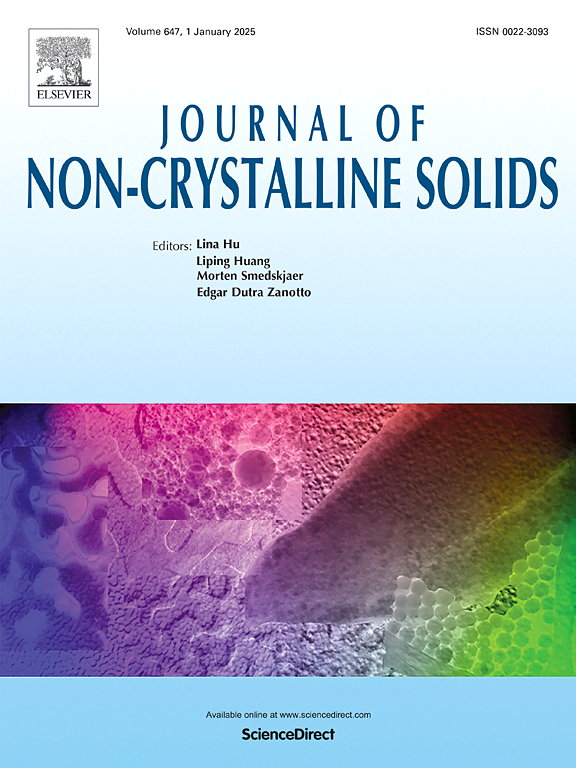Machine learning prediction of metallic glass forming ability: The pivotal role of relative energy
IF 3.2
3区 材料科学
Q1 MATERIALS SCIENCE, CERAMICS
引用次数: 0
Abstract
Despite the copious prior investigations into the forming ability of bulk metallic glasses (BMGs), accurately predicting glass forming ability (GFA) has persisted as a formidable challenge. By incorporating relative energy (RE, defined as the difference between the total energy of the alloy and the reference state of its constituent elements), which has been hitherto largely overlooked in machine learning (ML) prediction analyses, we demonstrate effective improvements in multiple ML models involving Extreme Gradient Boosting, Support Vector Regression, Linear Regression, and Decision Trees. Moreover, feature importance analysis based on SHAP (SHapley Additive exPlanations) summary plot indicates that RE ranks first in all four ML models, highlighting its crucial role in ML prediction of GFA, providing a new perspective for understanding and predicting GFA of MGs.
金属玻璃成形能力的机器学习预测:相对能量的关键作用
尽管之前对大块金属玻璃(bmg)的成形能力进行了大量的研究,但准确预测玻璃成形能力(GFA)一直是一个艰巨的挑战。通过结合相对能量(RE,定义为合金的总能量与其组成元素的参考状态之间的差异),迄今为止在机器学习(ML)预测分析中很大程度上被忽视,我们展示了包括极端梯度增强、支持向量回归、线性回归和决策树在内的多个ML模型的有效改进。此外,基于SHapley Additive exPlanations总结图的特征重要性分析表明,RE在四种ML模型中均排名第一,突出了其在ML预测GFA中的重要作用,为理解和预测mg的GFA提供了新的视角。
本文章由计算机程序翻译,如有差异,请以英文原文为准。
求助全文
约1分钟内获得全文
求助全文
来源期刊

Journal of Non-crystalline Solids
工程技术-材料科学:硅酸盐
CiteScore
6.50
自引率
11.40%
发文量
576
审稿时长
35 days
期刊介绍:
The Journal of Non-Crystalline Solids publishes review articles, research papers, and Letters to the Editor on amorphous and glassy materials, including inorganic, organic, polymeric, hybrid and metallic systems. Papers on partially glassy materials, such as glass-ceramics and glass-matrix composites, and papers involving the liquid state are also included in so far as the properties of the liquid are relevant for the formation of the solid.
In all cases the papers must demonstrate both novelty and importance to the field, by way of significant advances in understanding or application of non-crystalline solids; in the case of Letters, a compelling case must also be made for expedited handling.
 求助内容:
求助内容: 应助结果提醒方式:
应助结果提醒方式:


